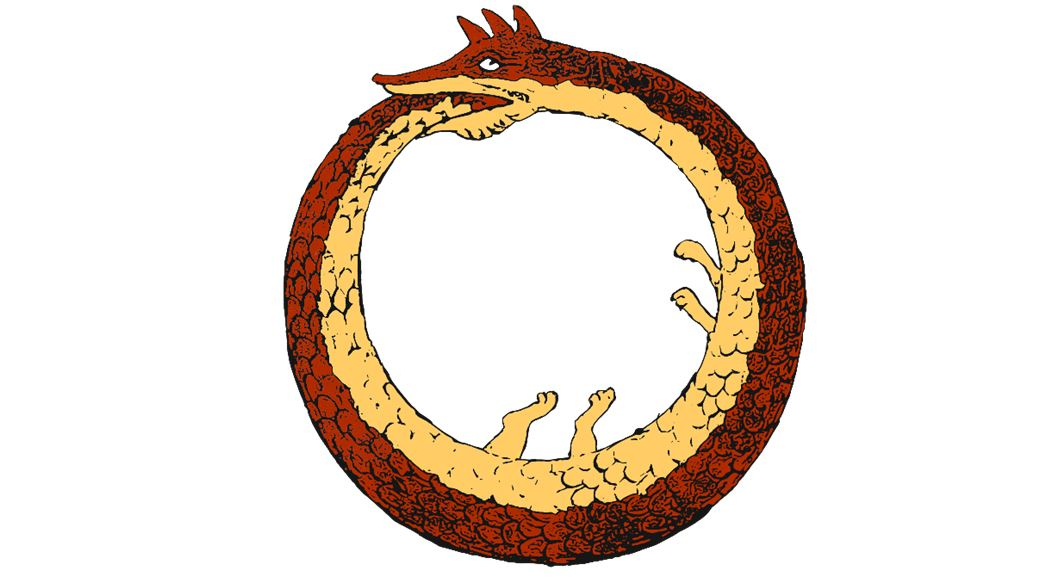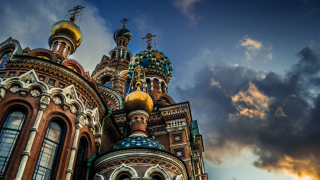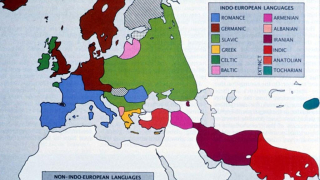Proto-Indo-Europeans: forgotten foundation of Europe
Europe as it usually appears to the onlooker starts with the fall of Western Roman Empire, the Middle Ages and above all, Christianity – whether Catholicism, Protestantism, or Anglicanism. It seems that history of this part of the world is intrinsically linked with Judaeo-Christian religious conversation – Aquinas, Michelangelo, Luther, Henry VIII, Inquisition, Religious Wars and so on. It is therefore quite shocking to consider that Christianity in the West has been on a steady decline for the past 150 years, with Nietzsche famously proclaiming that ‘God is dead’ in his monumental work ‘Thus Spoke Zarathustra’. A natural question that arises is that of both great simplicity and great importance: what now? With the absence of Christ in the lives of our Western brothers, what would be the guiding historical principle of Europe for the next 2000 years? One way to approach the answer is to look beyond the scope of Christian Europe to the mythical foundations of worship by our ancestors, the Proto-Indo-Europeans. This article will set out to explore one aspect of Proto-Indo-European myth, the idea of rebirth, portrayed by the Greek deity Dionysus and brought back to prominence by Friedrich Nietzsche.
Let us begin by outlining who Proto-Indo-Europeans were – a prehistoric group that is first traced in Early or Middle Neolithic around 6000 BC in the Western Eurasian steppe and spanned the area from Iberian peninsula to Iran and Bengal by 1000 BC.
As such, the contemporary language and culture of most of Europe, Iran, Russia, and Indian subcontinent all derive from these peoples.
The importance of the shared cultural foundation between such diverse regions and peoples cannot be understated. In our case, with the onset of Reformation and most clearly exemplified by German idealism, Christianity in Europe started in earnest to become a rational formalised set of logical dogmas, giving rise to the interest in pre-Christian mythology. This resulted in the second phase of idealism particularly in Germany – Romanticism. The adepts of this movement such as Hölderlin, Goethe and Hegel strived to fashion German society on the model of Ancient Greece, taking hints of its Pre-Christian myths and traditions. A concurrent interest of the intellectual elites in folk tradition exemplified by works of Grimm brothers and the advance of nationalism in society finally destroyed the Christian trajectory Europe was going in before the arrival of idealism. Relation to God stopped being a top down one, but rather became horizontal, allowing for the unprecedented surge in natural sciences, development of technology, and the ‘forgetting’ of Christianity in Western Europe.
One of the first voices to recognise and analyse the historical significance of the European post-Christian period was Friedrich Nietzsche, whose analysis took him to the development of his most important idea of ‘Ewige Wiederkunft’ – eternal return. First and foremost this theory is an analysis of European traditions and culture before Christianity, namely the Graeco-Roman pantheon; secondly, it is the possibility of revitalisation of these traditions in the post-Christian Europe. It has been 150 years since he wrote about eternal return, yet the question of European culture and Christianity remains polarising and contested to this day. The main aspect of pre-Christian, Proto-Indo-European tradition that results from Nietzsche’s analysis is that of the cult of Dionysus – the deity of wine and, surprisingly, eternal rebirth.
Dionysus is the deity of wine, but also of heroic vigour and the one who ascended from the afterlife, having been killed as a baby. Dionysus is one of the oldest gods in Greek pantheon, pre-dating Mycenaean times around 1500 BC. He was the main Deity of the Orphic sects that focused on earthly experiences and pleasures indulging in wine. These sects are named after Orpheus, a Greek mythical musician and a hero of the story centred around his descent into the world of afterlife to bring back his beloved. One can see in Dionysus and Orpheus the triumph of life over death. Their symbolism invokes the desire for communal and down-to-earth pleasures that at the same time adopt a mystic character. This mystic character is the belief that by indulging in wine and pleasures of life one can attain a spiritual connection to Dionysus himself. The true goal of these Orphic sects was therefore to connect with the Divine, while this Divine was anthropomorphic – not too dissimilar from us humans. The gains were thought to be quite massive – in a moment of mystic connection and under the influence of wine, it was common to commit suicide or to kill others believing that Dionysus would bring you back from the underworld. However, Dionysus was mostly not too keen on bringing people back, and this had a known strain on the population count of Bronze Age Greece, leading to the cult being banned by the authorities. The fascination with Orphic practices was still considerable even under the ban, and the sect was still present in the much later Hellenic period more than a thousand years later, and perhaps even beyond that.
The fundamental position of Dionysus is that of life affirmation, pleasure, and victory of life over death in the heroic individual struggle. As seen with the example of the Orphic sect the dominant worldview for ancient Greeks was inseparably linked with the mythological, human-like deities and demigods that are said to populate Earth. Greece was thought to embody a paradise for heroes, great deeds and a general worship of life. On the other hand, death was viewed as an inescapable and dark place, a hated and alien void. This position is portrayed by the almost universal worship of gods and heroes who have transcended death, returning alive from the afterlife. One of the main examples of such life affirmation is contained in Homer's ‘Odyssey’: in Book 11 Odysseus descends into the underworld and meets the great heroes of the Trojan War: Agamemnon, Ajax, and Achilles. The latter famously tells him of his envy for the living, and how he would give up all his glory for one single day on Earth, even as a lowly fisherman. Another important theme here is the poetic descent of Odysseus into the underworld, and his heroism and ability that allow him to ascend back to the world of the living. Other examples of this tradition include Heracles, Aeneas, and the aforementioned Orpheus.
Greek mythology originated in the Mycenaean and Minoan Greece in the Bronze Age and is largely an interpretation of the Phoenician and Mesopotamian pantheon of deities. One reason for this can be attributed to a globalised and interlinked society of the Bronze Age. A common ground may be found between the international integration and cooperation amongst the Eastern Mediterranean, Egypt and the Fertile Crescent to the world of today. In terms of international relations, peace was secured between the major players in the regions – Mycenae, Egypt, Hittites, and Assyria. This was done to ensure the flow of trade and prosperity of each ruling elite. With trade however culture and new ideas flowed from one place to another, influencing regions that are otherwise geographically and culturally separate. A famous example of this is the adoption of a Phoenician-based alphabet by the Greeks.
So, Mesopotamian and Phoenician pantheons of deities, although being one of the earliest recorded mythologies, have a shared origin in the Proto-Indo-European mythology. Since there is no archaeological evidence for it, such shared origin can only be exemplified through shared imagery. This is the start of the analysis that Nietzsche notes in ‘Vision and the Riddle’ chapter of ‘Thus Spoke Zarathustra’. While Nietzsche does not concern himself with scientifically outlining the idea of afterlife and rebirth as it was portrayed by the ancients, he tries to mimic the mystic connection to the deity Dionysus and the ancient ways of the Orphic sect. One type of imagery that is common to all worship of rebirth in Greece, Egypt, and Fertile Crescent is that of the serpent biting its own tail - ouroboros.
Indeed, throughout the areas inhabited or influenced by Proto-Indo-Europeans a serpent is linked to the myth of creation, of life and death. One can find traces of this ancient serpent in Biblical Leviathan, Mesopotamian Tiamat, Greek Typhon, Norse Jormungandr, Canaanite Lotan, Egyptian Apep, and Indian Vritra. Undoubtedly, the most significant serpent to European culture is the the Leviathan – a serpent that lies at the foundations of the world, which was slain by the Judaic ‘God of the Old Testament’. Leviathan is a heavily featured character in the cultural European works ranging from medieval mystics to Hobbes’ political treatise. Obviously, this is not least due to the spread of Christianity. After killing Leviathan God cuts its coils into pieces and feeds these pieces to the mankind, as written in Psalm 74. And in Isaiah 27:1, Leviathan is called a ‘torturous serpent’ who will be killed at the end of time.
Moreover, the process of cutting Leviathan into pieces must be contrasted with the Greek Orphic tradition of early Dionysus worship mentioned earlier. Dionysus is a son of Zeus, the main Deity of the Greek pantheon, who is also responsible for slaying Typhon (Greek counterpart to Leviathan) and cutting him into pieces. Moreover, Dionysus is said to have been cut into pieces by the Titans, and has been restored to life thereafter, only to be cut into pieces again, kickstarting a never-ending cycle of rebirths. Thus, both Dionysus and Leviathan bear connection to time, creation of the world, death and rebirth.
So what were the implications of worship of Dionysus and Leviathan on the worldview of the Proto-Indo-Europeans? The serpent represents Leviathan’s earthliness and the teaching of Dionysus and admiration of glory as a way to conquer death.
This is the root, for instance, of Alexander the Great’s desire to conquer the known world. Nietzsche, being the last of the German Romanticists, understands Leviathan and Dionysus to represent a new beginning for Europe, one ‘cleansed’ of the burden of Christian sin, transforming Western Europe into a land of heroes not bound by the Ten Commandments. Nietzsche envisages eternal return as a new form of creative and earthly morality that is premised upon the historical consideration of the past and the possibilities in the future. This would make eternal return a foundation of Nietzsche’s Dionysian philosophy, which combines elements of metaphysics and existential or psychological effects. In a single sentence, the Proto-Indo-European conception of life, death, and afterlife is revived to fit the necessities of 19th century post-Christian Europe.
Even though the implications of eternal return remain a relatively unexplored topic in the scholarship (barring Heidegger), Nietzsche’s analysis of Dionysus and afterlife bear descriptive significance. That is, Nietzsche uncovered the deep-lying presumptions that survived from Bronze Age Greece until 19th century Europe and even until today. Being devoid of Christianity the Western society will retract back to the ancient metaphysical foundations. Nietzsche clearly saw the connection between the anthropomorphic Dionysus and the rise of atheism; or Achilles’ fear of afterlife and the scientific understanding of death as nothing more than a biological process. However, being a Romanticist at the core, Nietzsche saw the social revolution back to Proto-Indo-European mythology as a positive that will in time bring Europe back into its Golden Age. He could not have been more wrong…














